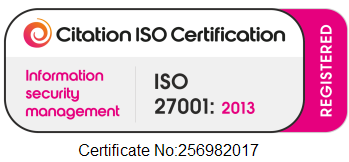The recruitment industry is steadily adapting to the expectations and behaviours of the Generation Z candidate.
Although new technologies are creating newborn artificial intelligence (AI) and cybersecurity jobs, there’s still a clear need to continue a level of human interaction as previously discussed in one of our blogs, ‘Five Reasons Human Interaction During The Recruitment Process Remains Important’.
Although some of these changes are welcomed, many create added pressure for professionals trying to attract talent. This blog gives an overview of how the industry will need to adapt to meet the expectations of the generation z candidate.
Recruiting for Newborn Roles
Although there is an argument technology has already begun to replace some job roles, something which many predict will only increase, it’s also creating new ones. The World Economic Forum predicts that by 2022, 133 million new jobs will emerge to meet the demand for technology.
This requires recruiters to get creative and find the skills required to support the future growth of their organisations, using channels not previously utilised before, such as certain ‘unprofessional’ social networks like TikTok, to reach candidates where they spend a lot of their digital time.
It also means many organisations will prioritise reskilling for jobs which are under-supplied. Putting the time and resources into training and development for existing employees is a cost-effective way to grow your talent pool for future job openings.
Tech Savvy Candidates
The Generation Z Candidates that are entering the market will be bringing new digital attributes that recruiters need to be educated on. It also needs to be considered that candidates no longer apply hours of their time to applications, they expect to find and apply for jobs at a push of a button. The LinkedIn quick apply option is a great example of this. For those who are happy to use this option when advertising on LinkedIn, will be more likely to receive a higher volume of applicants.
Generally, if you want to stand above competitors, your organisation will need to embrace some of these new digital expectations in some way, shape, or form. You’d never have thought a voice-guided application form would ever be needed, but it is just one example, an example which itself is steadily rising in use. And it’s not just the recruitment industry that’s changing. We have begun to change our behaviour as consumers with the evolution of digital sites such as Amazon.
Organisations are also having to face the digital voice of their employees and candidates, as they are more likely to freely share their experiences online via review sites like Glassdoor and indeed, and intern seek out this social proof during their job search.
The way we share information and absorb content is also changing daily. Candidate engagement platforms are being used to share stories and experiences of their work-life straight from your careers website. Content which is seen to be far more effective at engaging the brain and stimulating emotional reaction with employer branding than any typical corporate styling.
A New Candidate Journey
Many would admit that technology is usefully taking over time-consuming administrative tasks, this provides recruiters with the ability to focus their time elsewhere, including having a more hands-on interaction with candidates. The use of chats bots is an example of this, but technology is far from perfect and does not always reflect the real thing. This high-touch, personalised candidate experience is what candidates crave, but don’t always get. According to Talent Board, positive candidate experience continues to drop from 62% of candidates saying their experience was positive in 2015, down to 50% in 2018. Like we touched on earlier, this can have a ripple effect on businesses with annoyed candidates telling others to boycott the company’s products or services.
Video Technology
We have discussed the rise of video interviews and how it’s changing the candidate experience. Whether it’s Skype, Google Hangouts or an AI-powered tech to scan for facial cues, video enhances the screening process by saving time for both the recruiter and candidate while still providing effective interaction. Using algorithms can also allow us to track, analyse and assess the candidate’s facial expressions and tone of voice to avoid human bias. Augmented Reality (AR) and Virtual Reality (VR) go a long way to truly showcase a working environment, whether that be through previews or office tours.
Summary
Only by embracing new technology developments into your recruitment strategies will you effectively and efficiently hire the generation z candidate. But it’s not something that should be rushed. Carefully and strategically implement what will work best for your organisation. There’s no disputing that technology has a lot to offer in recruitment to attract, hire, retain and develop talent if utilised. Those who choose not to will find themselves less competitive against those who do. But remember, even though these technology advances can work in favour, the human touch still provides that authentic connection, and using both is the way to truly strengthen your recruitment.
For more information on how we can you to attract more candidates, get in touch with us today.
Get our blog posts sent straight to your inbox!




Comments are closed